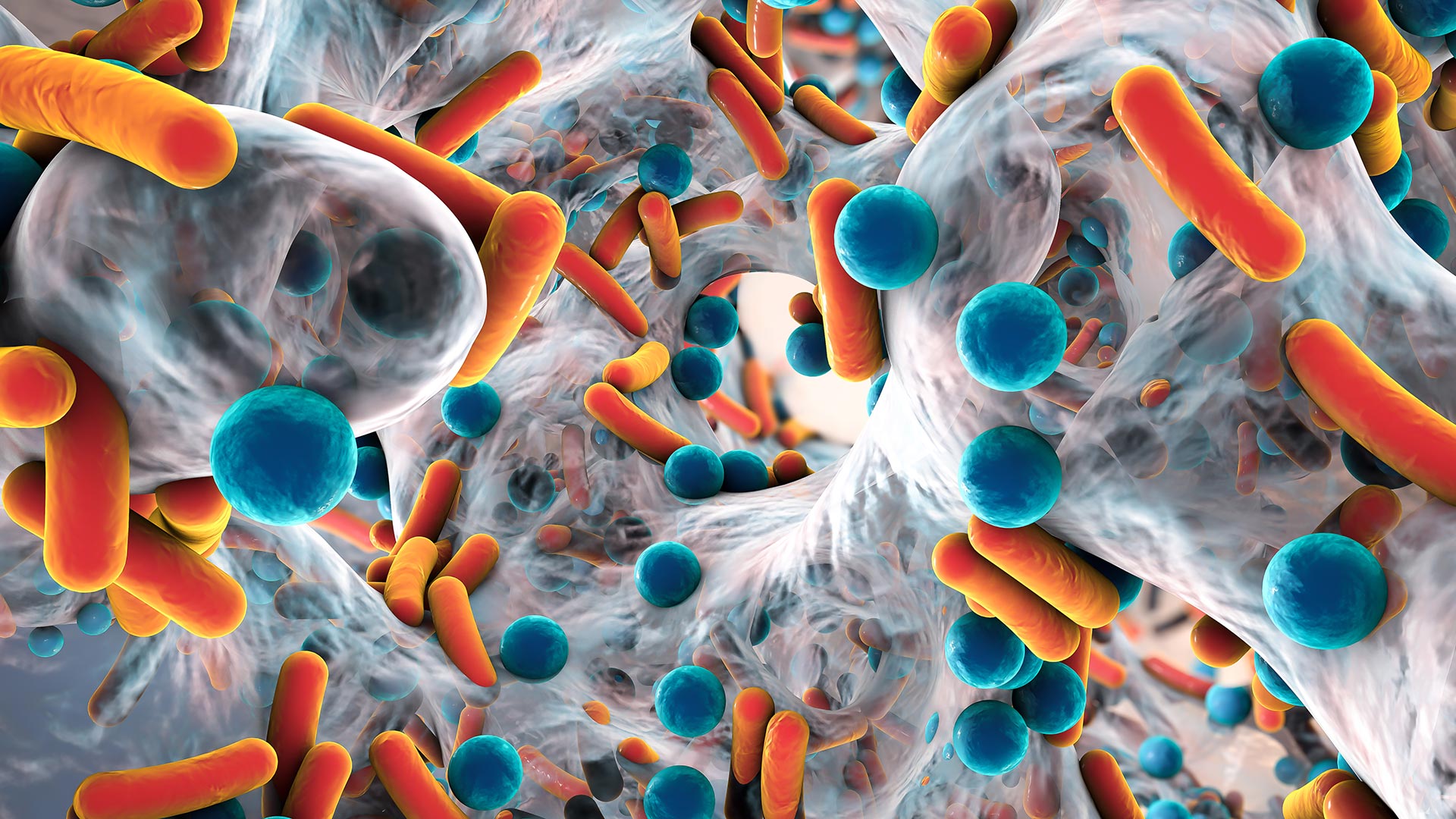In the United States alone, drug-resistant bacteria and fungi infect almost 3 million people per year and kill about 35,000. Antibiotics are essential and effective, but in recent years overuse has led to some bacteria developing resistance to them. The infections are so difficult to treat, the World Health Organization deemed antibiotic resistance a top 10 global public health threat.
Now, Professor John E. Moses at Cold Spring Harbor Laboratory (CSHL) has created a new weapon against these drug-resistant superbugs—an antibiotic that can shape-shift by rearranging its atoms.
Moses came up with the idea of shape-shifting antibiotics while observing tanks in military training exercises. With rotating turrets and nimble movements, the tanks could respond quickly to possible threats.
This animated video illustrates how the Moses team is reengineering existing antibiotics to better fight and kill drug-resistant bacteria.
A few years later, Moses learned of a molecule called bullvalene. Bullvalene is a fluxional molecule, meaning its atoms can swap positions. This gives it a changing shape with over a million possible configurations—exactly the fluidity Moses was looking for.
Several bacteria, including MRSA, VRSA, and VRE, have developed resistance to a potent antibiotic called vancomycin, used to treat everything from skin infections to meningitis. Moses thought he could improve the drug’s bacteria-fighting performance by combining it with bullvalene.
He turned to click chemistry, a Nobel Prize–winning class of fast, high-yielding chemical reactions that “click” molecules together reliably. This makes the reactions more efficient for wide-scale use.
“Click chemistry is great,” says Moses, who studied this revolutionary development under two-time Nobel laureate K. Barry Sharpless. “It gives you certainty and the best chance you’ve got of making complex things.”
Using this technique, Moses and his colleagues created a new antibiotic with two vancomycin “warheads” and a fluctuating bullvalene center.

Moses tested the new drug in collaboration with Dr. Tatiana Soares da-Costa (University of Adelaide). The researchers gave the drug to VRE-infected wax moth larvae, which are commonly used to test antibiotics. They found the shape-shifting antibiotic significantly more effective than vancomycin at clearing the deadly infection. Additionally, the bacteria didn’t develop resistance to the new antibiotic.
Researchers can use click chemistry with shape-shifting antibiotics to create a multitude of new drugs, Moses explains. Such weapons against infection may even be key to our species’ survival and evolution.
“If we can invent molecules that mean the difference between life and death,” he says, “that’d be the greatest achievement ever.”
Written by: Margaret Osborne, Science Writer | publicaffairs@cshl.edu | 516-367-8455
Funding
National Cancer Institute, Australian Research Council, National Health and Medical Research Council of Australia, New Zealand Marsden Fund, Royal Society University Research Fellowship, Wolfson College, Medical Research Council U.K.
Citation
Ottonello, A., et al., “Shapeshifting bullvalene-linked vancomycin dimers as effective antibiotics against multidrug-resistant gram-positive bacteria”, Proceedings of the National Academy of Sciences, April 3, 2023. DOI: 10.1073/pnas.2208737120
Principal Investigator

John Moses
Professor
Cancer Center Member
Ph.D. (DPhil), University of Oxford, 2004
